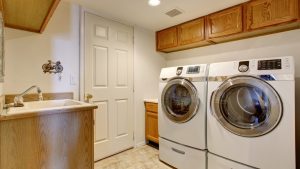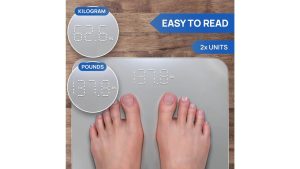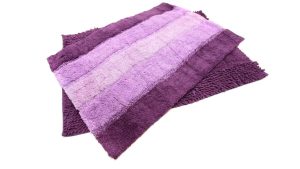How to Set Up Washer And Dryer Setting up a washer and dryer involves finding a suitable location with access to water, electricity, and ventilation. Install the washer and dryer according to the manufacturer’s instructions to ensure proper functioning and safety.
When setting up a washer and dryer, it’s essential to consider the layout of your space, the type of connections needed, and any additional accessories required. Proper installation will ensure optimal performance and longevity of your appliances. This article will guide you through the essential steps to set up your washer and dryer efficiently and effectively.
Whether you’re a first-time appliance owner or simply need a refresher, this guide will provide you with the necessary information to get your washer and dryer up and running in no time.
Choosing The Right Location
Choosing the right location for your washer and dryer is an essential step in ensuring an efficient and functional laundry area. Proper placement not only affects the performance of the appliances but also impacts convenience and safety. When setting up your washer and dryer, consider the following aspects to ensure you choose the ideal location.
Considerations For Space And Ventilation
Space and ventilation are crucial factors to consider when determining the location of your washer and dryer. Ensure there is enough space to accommodate both appliances comfortably, with sufficient room for access and maintenance. Allow for adequate ventilation to prevent heat buildup and ensure the appliances operate effectively.
Proximity To Electrical And Plumbing Setups
The proximity to electrical and plumbing setups significantly influences the placement of your washer and dryer. Position the appliances close to electrical outlets to minimize the need for extended cords and reduce the risk of tripping hazards. Additionally, ensure that the location allows for easy access to the plumbing connections for water supply and drainage.
Flooring And Leveling Requirements
When selecting the location, consider the flooring and leveling requirements for the washer and dryer. Choose a flat, stable surface that can support the weight of the appliances, minimizing the risk of imbalance or vibration during operation. It’s essential to ensure the floor is level to prevent potential damage to the appliances and maintain their stability.
Preparing Utilities For Installation
Before setting up your washer and dryer, it’s crucial to ensure that the necessary utilities are properly prepared for installation. This includes evaluating and setting up electrical connections, plumbing essentials for the washer and dryer, and ventilation considerations for the dryer.
Evaluating And Setting Up Electrical Connections
Check the electrical requirements for your washer and dryer. Ensure that the electrical outlets are compatible with the appliances and provide the necessary voltage and amperage. If needed, consult a qualified electrician to install or upgrade the electrical connections to meet the specifications of the washer and dryer.
Plumbing Essentials For Washer And Dryer
For the washer, ensure that there are hot and cold water supply lines within reach of the washing machine’s location. Install shutoff valves to allow easy access for maintenance. Additionally, provide a drain line for the washer to remove used water efficiently. For the dryer, make sure there is no water supply needed, but it’s essential to have a proper drainage system in case of any leaks or condensation.
Ventilation Considerations For A Dryer
Proper ventilation is critical for a dryer to operate efficiently and safely. Ensure that there is an exhaust duct leading from the dryer to the outside of the house. Regularly inspect and clean the duct to prevent lint buildup, which can pose a fire hazard. It’s important to use rigid metal or UL-listed flexible metal ducts for the exhaust to ensure optimal ventilation and safety.
How To Set Up Washer And Dryer
Setting up a washer and dryer may seem daunting, but with the right tools and a clear plan, it can be a straightforward process. Whether you’ve just purchased a new set or are moving to a new home, properly positioning and installing your appliances is crucial to their performance and longevity. In this guide, we’ll walk you through the essential steps to setting up your washer and dryer for optimal use.
Unpacking And Moving Your Appliances Safely
When unpacking and moving your washer and dryer, it’s essential to take care to ensure they are not damaged in transit. Follow these guidelines to unpack and move your appliances safely:
- Remove any packaging materials and inspect the appliances for any visible damage.
- Use a dolly or hand truck to transport the appliances to their designated location.
- Ensure the washer and dryer are placed on a level surface to prevent any imbalance during operation.
Tools And Materials Needed For Installation
Before you begin the installation process, gather the necessary tools and materials to facilitate the setup of your washer and dryer. Here’s a list of the essential items you’ll need:
| Tools | Materials |
|---|---|
| Adjustable wrench | Water supply hoses |
| Level | Drain hose |
| Screwdriver | Vent duct |
Step-by-step Guide To Positioning Your Washer And Dryer
Once you have the necessary tools and materials, follow these steps to properly position your washer and dryer:
- Place the appliances in their designated location, ensuring they are level and stable.
- Connect the water supply hoses to the corresponding valves and the drain hose to the designated drain line.
- For the dryer, attach the vent duct to the rear of the appliance and ensure it is properly secured.
- Double-check all connections to ensure they are tight and secure.
Expert Tips For Effortless Installation
Setting up a washer and dryer can be a straightforward task if you follow the right steps. The key to a successful installation lies in ensuring correct electrical and plumbing connections, testing for leaks and electrical safety, and making final adjustments for leveling and stability. Here are the expert tips for hassle-free installation of your washer and dryer.
Ensuring Correct Electrical And Plumbing Connections
Before beginning the installation process, it’s crucial to ensure that the electrical and plumbing connections are in place and properly aligned. Here’s a checklist to follow:
- Refer to the manufacturer’s guidelines for specific electrical requirements for both the washer and dryer.
- Ensure that the electrical outlets and plumbing connections are conveniently located near the designated installation area.
- Check that the power source and water supply are compatible with the appliance specifications.
- Verify that all connections meet local building and safety codes.
Testing For Leaks And Electrical Safety
Once the connections are in place, it’s essential to run a series of tests to ensure safety and prevent potential leaks and electrical hazards. Here’s what you need to do:
- Inspect all plumbing connections for leaks and tighten them if necessary.
- Check the electrical wiring for any frays or exposed wires and ensure proper grounding.
- Run a test cycle for both the washer and dryer to confirm that all connections are functioning without issues.
- Use a water leak detector to ensure there are no unnoticed leaks, especially around the washer’s water inlet and drain hoses.
Final Adjustments For Leveling And Stability
Once the electrical and plumbing connections have been verified, it’s time to make final adjustments to ensure the washer and dryer are properly leveled and stable. Follow these steps:
- Use a bubble level to ensure the appliances are resting evenly on the floor.
- Adjust the feet of the washer and dryer to eliminate any wobbling or rocking motion.
- Secure the appliances to the floor or the supporting walls to prevent movement during operation.
Securing And Maintaining Your Appliances
Attaching The Washer And Dryer To The Supply Lines
When setting up your washer and dryer, it is crucial to securely attach them to the supply lines. Use the appropriate hoses for the water supply and ensure they are tightened properly to prevent leaks. Additionally, make sure that the dryer vent hose is connected securely to the vent outlet to allow for proper ventilation.Recommending Best Practices For Maintenance
- Regularly clean the lint trap in the dryer to prevent the build-up of lint, which can pose a fire hazard and decrease the dryer’s efficiency.
- Inspect the hoses and connections for any signs of wear or damage and replace them if necessary to prevent leaks.
- Keep the area around the appliances clean and free of debris to maintain proper airflow and prevent potential hazards.
When To Seek Professional Assistance For Setup Or Service
If you encounter challenges during the setup process or notice any issues with the operation of your washer and dryer, it is advisable to seek professional assistance. A qualified technician can diagnose and address any underlying problems to ensure the safe and efficient performance of your appliances.Frequently Asked Questions On How To Set Up Washer And Dryer
How Do I Properly Set Up A Washer And Dryer?
To set up a washer and dryer, start by leveling the appliances, connecting water hoses, and plugging in the power cords. Ensure proper ventilation and clearance space, and follow the manufacturer’s instructions for installation. It’s also crucial to secure the dryer vent to prevent air leaks.
What Electrical Requirements Are Needed For A Washer And Dryer?
Most washers and dryers require a 240-volt outlet for the dryer and a standard 120-volt outlet for the washer. It’s essential to have a grounded electrical connection to ensure safe operation. If the existing outlets do not meet the requirements, consult an electrician to make necessary upgrades.
Can I Stack My Washer And Dryer To Save Space?
Yes, many washer and dryer models are designed to be stacked to save space. However, it’s crucial to follow the manufacturer’s guidelines for proper stacking and use a stacking kit for stability. Consider the height and accessibility when planning the installation, ensuring ease of use.
How Do I Maintain My Washer And Dryer For Optimal Performance?
Regular maintenance includes cleaning the lint trap in the dryer, wiping down the washer drum, and inspecting hoses for leaks or damage. Additionally, scheduling professional vent cleaning for the dryer can prevent fire hazards. Refer to the user manuals for specific guidelines on maintenance tasks.
What is the recommended location for installing a washer and dryer?
Choose a well-ventilated space with access to utility connections and enough room for both appliances.
Can I use extension cords for my washer and dryer?
It’s not recommended. Directly plug appliances into dedicated outlets to avoid safety hazards.
How do I check for leaks after connecting water hoses to the washer?
Turn on the water supply and visually inspect connections. Tighten if needed and monitor for any signs of leakage.
What’s the importance of proper ventilation for a dryer?
Proper ventilation expels hot air and moisture, preventing overheating and potential damage to the laundry area.
Do I need professional help with gas dryer installation?
Yes, for safety reasons, it’s recommended to have a qualified professional install the gas line for gas-powered dryers.
How can I ensure my washer and dryer are level for optimal performance?
Use a level to confirm both appliances are on flat surfaces. Adjust leveling legs to eliminate any imbalance.
Can I run a test cycle on my washer and dryer after installation?
Yes, it’s advisable to run a short cycle on both appliances to ensure they are functioning correctly.
What type of duct should I use for dryer ventilation?
Use aluminum ducts for safety and efficiency when venting your dryer to the exterior of your home.
Conclusion
Setting up your washer and dryer doesn’t have to be a daunting task. With the right tools and a clear understanding of the process, you can easily install and connect your appliances. By following the steps outlined in this guide, you can ensure that your washer and dryer are functioning properly, giving you the convenience and efficiency you need in your home.






